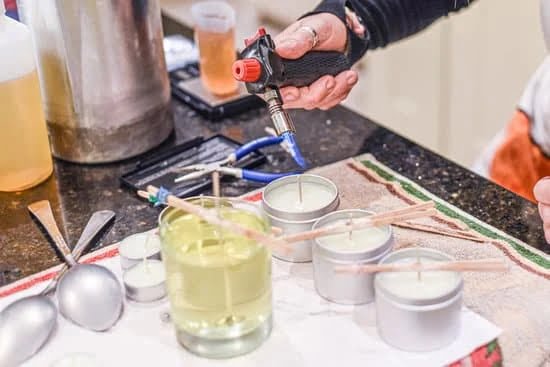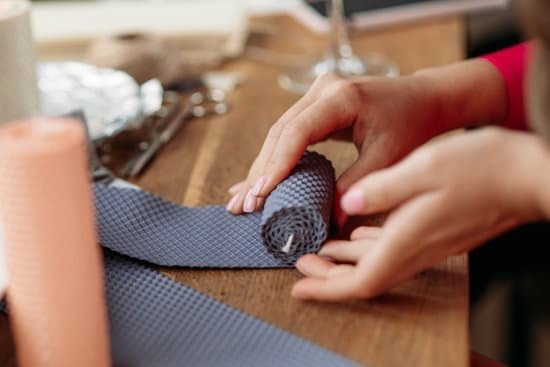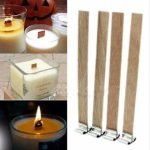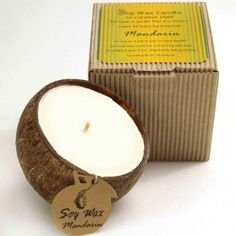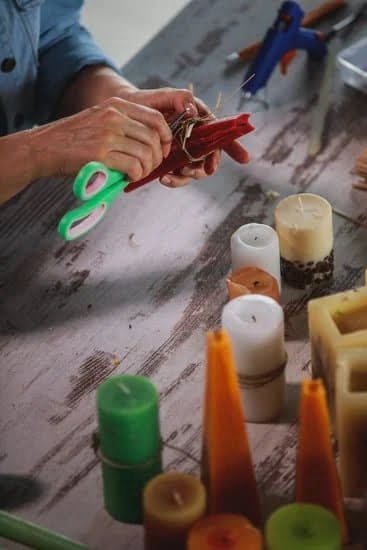Candle making is an art that requires precision, skill, and the right tools. One such tool that plays a crucial role in the candle making process is a heat gun.
Heat guns are not only essential for heating and softening candle wax but also for shaping and sculpting candles into unique designs. In this article, we will explore the different types of heat guns available for candle making, their benefits, and how to pick the right one for your specific needs.
Using a heat gun in candle making offers several advantages. Firstly, it allows for precise control over temperature, ensuring that the candle wax reaches the ideal consistency for pouring or molding. This is especially important when working with different types of wax that require specific temperature ranges.
Secondly, heat guns provide quick and even heat distribution, allowing the wax to melt evenly without overheating or causing damage. Lastly, they enable candle makers to experiment and create various textures and shapes by manipulating melted wax using different techniques.
When it comes to choosing a heat gun for candle making, there are several options available in the market. Each type of heat gun has its own features, pros, and cons. Some popular types include adjustable temperature heat guns, dual temperature heat guns, variable airflow heat guns, and industrial-grade heat guns. Depending on your skill level, budget, and specific requirements in candle making techniques, you can select the most suitable type of heat gun.
In the following sections of this article, we will delve deeper into each type of heat gun for candle making and discuss their functionalities in detail. We will also share tips on heating and softening candle wax using these tools as well as techniques for shaping and sculpting candles with their help. Additionally, we will provide important safety precautions to follow when using these devices and troubleshoot common issues that may arise during their usage.
By understanding the importance of using heat guns in candle making and exploring various types available in the market along with their features, you can make an informed decision on selecting the right heat gun for your candle crafting needs. Whether you are a beginner or an experienced candle maker, incorporating a heat gun into your arsenal will certainly enhance your creative possibilities and take your candle making to new heights.
Different Types of Heat Guns for Candle Making
Heat guns are a crucial tool for candle making, as they provide a controlled source of heat that allows for various techniques and applications. When it comes to choosing the right heat gun for candle making, there are several different types available in the market. Each type has its own features, pros, and cons, catering to different preferences and requirements.
One popular type of heat gun for candle making is the basic handheld heat gun. These heat guns are lightweight and easy to use, making them suitable for beginners or those on a budget. They typically have two temperature settings and are ideal for simple tasks such as heating and softening wax or shaping candles.
Another type of heat gun used in candle making is the adjustable temperature heat gun. These heat guns offer more control over the temperature settings, allowing users to fine-tune the level of heat according to their specific needs. With adjustable temperature settings, they can be used for a wide range of candle making techniques such as melting wax, shaping candles, or creating unique textures.
For professional-grade candle makers or those looking for advanced features, there are industrial-grade heat guns available in the market. These heavy-duty heat guns have higher wattage and airflow capacity, providing more intense and concentrated heat. They are often equipped with additional features such as LCD displays or digital control panels to accurately monitor and adjust the temperature settings.
When deciding which type of heat gun to choose for candle making, it is important to consider the specific techniques you plan to use and your skill level. Beginners may find basic handheld or adjustable temperature heat guns more suitable for their needs, while experienced candle makers may opt for industrial-grade models.
Heating and Softening Candle Wax with Heat Guns
When it comes to candle making, one of the most crucial steps is heating and softening the candle wax. This process allows the wax to become malleable and pliable, making it easier to work with and mold into desired shapes and textures. Heat guns play a vital role in achieving this step efficiently and effectively.
Using a heat gun, you can quickly heat up the candle wax to achieve the ideal temperature for your specific wax type. Different types of waxes have different melting points, so it’s essential to understand the recommended temperature range for the type of wax you’re using.
Tips and Tricks for Achieving the Ideal Temperature
To achieve the ideal temperature for your candle wax using a heat gun, there are a few tips and tricks you can follow:
- Start on a lower setting: Begin by setting your heat gun on a lower temperature setting. Gradually increase the temperature until you reach the desired level.
- Test frequently: Use a thermometer or an infrared thermometer gun to measure the temperature of your melted wax regularly. This will help ensure that you don’t overheat or underheat the wax, which can affect its texture and performance.
- Maintain distance: Hold the heat gun at a moderate distance from the surface of the wax. Keeping too close may cause hot spots or uneven heating, while holding it too far will result in slower melting times.
Specific Instructions for Desired Candle Textures
The texture of your candles can add an extra visual appeal that sets them apart from others. Here’s how you can use a heat gun to achieve specific candle textures:
- Smooth Finish: For a sleek and smooth finish on your candles, hold the heat gun above the surface of molten wax at a distance while moving it gradually across in slow sweeping motions.
- Rustic Texture: To create a rustic and organic texture, hold the heat gun closer to the surface of the wax and move it in irregular patterns. This will cause some areas of the wax to melt more than others, resulting in a rough and textured appearance.
- Marbling Effect: If you want to achieve a marbled effect on your candles, melt different colored waxes separately and pour them into layers. Then, use the heat gun to briefly melt the top layer until it starts to ripple. Gently swirl the melted wax with a skewer or toothpick for a marbled effect.
By using different techniques with your heat gun, you can play around with textures and create unique designs that add an extra touch of artistry to your candles. Remember to always practice caution when working with hot wax and heat guns to ensure safety throughout your candle making process.
Heat Guns for Shaping and Sculpting Candles
One of the most exciting aspects of candle making is the ability to shape and sculpt unique designs with melted wax. Heat guns play a crucial role in this process, allowing crafters to manipulate the liquid wax to create stunning shapes and textures. Whether you’re a beginner or an experienced candle maker, using heat guns for shaping and sculpting candles opens up endless possibilities for creativity.
To shape and sculpt candles using a heat gun, there are various techniques that can be employed. One common technique is called “dipping,” where the heat gun is used to melt a small area of the candle’s surface, allowing it to be bent or molded into different positions. This method works particularly well when creating twisted or curved shapes.
Another popular technique is called “carving,” where the heat gun is used to soften specific areas of the candle so that they can be easily manipulated with tools like sculpting knives or dental picks. This technique allows for intricate detailing and precision in the design.
Additionally, heat guns can be used to create interesting textures on candle surfaces. By directing hot air onto the cooled wax, crafters can achieve effects like “cracked” or “mottled” finishes, adding visual interest and dimension to their creations.
To get started with shaping and sculpting candles using a heat gun, here are some tips:
- Take precautions: Always wear protective gloves and use proper eye protection when working with a heat gun. The hot air emitted by the gun can cause serious burns if mishandled.
- Experiment with different temperatures: Different types of wax require different temperatures for optimal manipulation. Start with a low setting on your heat gun and gradually increase it until you achieve the desired level of softness in the wax.
- Practice patience: Take your time when using a heat gun for shaping and sculpting candles. It’s better to work gradually instead of rushing, as the wax can cool and harden quickly.
- Get inspired: Look for inspiration in candle artistry and experiment with different techniques. The versatility of heat guns allows you to create endless designs and textures, so don’t be afraid to think outside the box.
With the right technique and a bit of practice, heat guns can truly elevate your candle making skills by providing you with the tools to shape and sculpt candles into stunning works of art. So, grab your heat gun and let your imagination run wild as you explore the limitless possibilities of shaping and sculpting candles.
Safety Precautions When Using Heat Guns for Candle Making
When using heat guns for candle making, it is important to prioritize safety to prevent accidents and ensure a smooth crafting process. Here are some crucial safety precautions to follow when operating heat guns:
- Protective Gear: It is essential to wear appropriate protective gear when using a heat gun. This includes heat-resistant gloves, safety glasses, and an apron or protective clothing to protect yourself from potential burns or injuries.
- Proper Ventilation: Adequate ventilation is necessary when working with a heat gun as it emits hot air and fumes. Ensure that you work in a well-ventilated area or use a fume extractor to reduce the inhalation of fumes and improve air quality.
- Temperature Control: Familiarize yourself with the temperature settings on your heat gun and always use the recommended temperature for your candle making project. Avoid overheating the wax, as it can cause fires or release harmful fumes.
- Keep Flammables Away: Create a safe workspace by removing any flammable materials such as paper, fabric, or chemicals from the immediate vicinity of your working area. Keep a fire extinguisher nearby in case of emergencies.
- Use in Short Bursts: To avoid overheating the wax or causing accidental damage, use your heat gun in short bursts rather than continuously applying heat for extended periods of time.
- Avoid Contact with Skin: Take caution when handling a heated heat gun and avoid contact with your skin to prevent burns. Always rest the heated nozzle on a suitable surface, such as a dedicated heat-proof mat or stand.
- Unplug After Use: Once you have finished using the heat gun, unplug it from the power source and allow it to cool down completely before storing it away.
By following these safety precautions, you can create candles with peace of mind and minimize risks associated with using heat guns.
| Safety Precautions |
|---|
| Use protective gear such as heat-resistant gloves and safety glasses. |
| Work in a well-ventilated area or use a fume extractor. |
| Avoid overheating the wax and follow recommended temperature settings. |
| Remove flammable materials from the workspace and have a fire extinguisher nearby. |
| Use the heat gun in short bursts instead of continuous heating. |
Picking the Right Heat Gun
When it comes to picking the right heat gun for candle making, there are several factors that should be considered. Choosing the right heat gun can greatly impact the outcome of your candle making process and ultimately determine the success of your creations. In this section, we will explore some key factors to consider when selecting a heat gun for candle making.
One important factor to consider is the temperature range of the heat gun. Different candle waxes have different melting points, so it’s crucial to choose a heat gun that can reach and maintain the ideal temperature for your specific wax type.
Some heat guns have adjustable temperature controls, allowing you to easily set and maintain the desired temperature throughout the candle making process. This feature is especially important if you work with multiple types of wax or if you like experimenting with different textures and finishes in your candles.
Another factor to consider is the airflow control of the heat gun. The airflow determines how concentrated or diffused the heat is while using the tool. For candle making, it’s important to have a heat gun that offers both high and low airflow settings. Higher airflow settings can be used for quickly heating up larger areas of wax or creating smooth surfaces, while lower airflow settings are useful for intricate detailing or delicate wax manipulation.
Additionally, considering the size and weight of the heat gun is crucial for ease of use and comfort during long candle making sessions. A lighter and more compact heat gun may be preferred by those who value portability and maneuverability, while a heavier one may provide better stability when working on larger projects.
Lastly, it’s important to take into account customer reviews and recommendations when choosing a heat gun for candle making. Reading about other people’s experiences with different models can provide valuable insights into their performance, durability, and overall user satisfaction.
By keeping these factors in mind and doing thorough research on available options, you’ll be able to pick a heat gun that suits your specific needs as a candle maker. Remember, selecting the right tools is an essential part of successful candle making and can greatly enhance the quality and creativity of your final products.
Troubleshooting Common Issues with Heat Guns in Candle Making
Overheating and Burning Candle Wax
One of the most common issues encountered when using heat guns for candle making is overheating and burning the candle wax. This can happen when the heat gun is held too close to the wax or left in one spot for too long.
To prevent this, it is important to keep a safe distance between the heat gun and the wax, typically around 8-10 inches. Additionally, constantly move the heat gun in a circular motion to evenly distribute the heat.
If you notice that your candle wax is starting to bubble or smoke, it is a clear sign that it has reached its melting point and may be at risk of burning. In this case, immediately remove the heat gun from the wax and allow it to cool down before continuing with the process. It’s always better to err on the side of caution and prevent any potential damage or accidents.
Poor Control and Uneven Heating
Another common issue with using heat guns in candle making is achieving poor control and uneven heating of the wax. This can result in an inconsistent texture or finish on your candles. To overcome this problem, practice good hand-eye coordination and make small adjustments as you work.
To ensure even heating, move the heat gun back and forth across the surface of the wax rather than focusing on one area for too long. Rotating your candle as you apply heat will also help distribute warmth evenly. Keep in mind that different types of waxes require different temperatures for optimal melting, so familiarize yourself with your specific wax’s ideal temperature range.
Heat Gun Maintenance and Longevity
Ensuring proper maintenance of your heat guns is essential for their longevity and performance. Over time, residue from melted wax can build up on the nozzle or heating element, affecting both functionality and safety. To clean your heat gun, wait until it has completely cooled down and use a soft cloth or brush to remove any wax residue.
In addition to regular cleaning, it is important to store your heat gun properly. Keep it in a dry and dust-free environment, away from any flammable materials. If your heat gun starts experiencing issues such as uneven heating or unusual noises, consult the manufacturer’s instructions for troubleshooting or consider seeking professional repair services.
By addressing these common issues and following proper maintenance procedures, you can ensure that your heat gun remains a reliable tool throughout your candle making journey.
Advanced Techniques and Innovations in Heat Guns for Candle Making
As the candle making industry continues to evolve, so do the techniques and tools used in the process. Heat guns have become an essential tool for candle makers, offering a wide range of creative possibilities. In recent years, there have been significant advancements and innovations in heat guns specifically designed for candle making. These advancements have revolutionized the way candles are crafted, allowing artisans to push the boundaries of their creativity.
One key advanced technique made possible by innovative heat guns is the creation of marbled candles. By applying controlled bursts of heat at specific angles and intensities, candle makers can achieve beautiful swirls and patterns on the surface of their candles. This technique requires precision and practice, but with the right heat gun and technique, stunning marbled designs can be achieved.
Another cutting-edge innovation in heat guns for candle making is the inclusion of adjustable temperature controls. Traditional heat guns often had fixed temperature settings that limited their versatility. However, many modern heat gun models now allow users to adjust temperatures within a certain range. This feature is particularly useful when working with different types of wax that require specific melting points or when achieving desired textures or finishes on candles.
Furthermore, some newer heat gun models also offer ergonomic designs that improve comfort and ease of use during long candle making sessions. These models feature lightweight construction, non-slip grips, and balanced weight distribution to reduce hand fatigue and enhance overall control. The incorporation of these ergonomic features has greatly benefited professional candle makers who spend extended periods working with heat guns.
With advancements like adjustable temperature controls and ergonomic designs, it is clear that heat gun manufacturers are actively catering to the needs and demands of candle makers. As technology continues to progress, there is no doubt that we will see further innovations in heat gun design specifically tailored for the artistry of candle making.
Conclusion
In conclusion, heat guns have proven to be essential tools in the art of candle making. Throughout this article, we have explored the different types of heat guns available in the market and discussed their features, pros, and cons. We have also delved into the various ways heat guns can be used in the candle making process, from heating and softening wax to shaping and sculpting unique candle designs.
One of the key takeaways from this article is the importance of selecting the right type of heat gun for successful candle making. Depending on your specific techniques and preferences, there are budget-friendly options as well as professional-grade heat guns to choose from. It is crucial to consider factors such as temperature control capabilities, airflow settings, and overall durability when making your decision.
Above all, we encourage readers to embrace heat guns as versatile tools that add a new dimension to their candle crafting journey. With proper safety precautions in place, you can experiment and explore different techniques to achieve desired textures and shapes. By keeping up with emerging trends and innovations in heat gun technology, you can stay at the forefront of this ever-evolving industry.

Welcome to my candle making blog! In this blog, I will be sharing my tips and tricks for making candles. I will also be sharing some of my favorite recipes.

